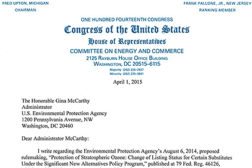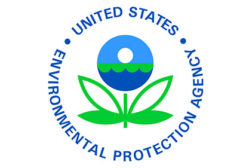Home » HFC refrigerants
Articles Tagged with ''HFC refrigerants''
The known — even if difficult — is always easier to face than the unknown
Read More
EPA Finalizes Rule Reducing HFCs
HFC emissions in the US are expected to nearly double by 2020 and triple by 2030
July 20, 2015
EPA Issues Final Rule on HFCs
As expected, R-404A, -407A, -410A, -507A, many others targeted
July 2, 2015
Refrigerant Suppliers File Antidumping Duty Petition against China
Coalition alleges dumping margins ranging from 100 percent to over 300 percent
July 2, 2015
White Paper Analyzes Tracking, Recycling of HFCs
Recycling Called ‘Simplest, Most Cost-Effective’ Step
June 1, 2015
Self A/C System Recharge Kit Flies in the Face of Logic
TV Commercial Sparks Memories of (What Should Be) Days Gone By
Read More
Congressman Questions the EPA about HFCs
US Representative Voices Concerns About Proposed Restrictions
Read More
May 7, 2015: Reclamation of HFC Refrigerants Can Eliminate Billions of Tons of Greenhouse Gases
EOS Climate Releases White Paper Analyzing Climate Impact of HFC Refrigerants
May 7, 2015
A Folk Hero? Congressman Pens Tough Letter to EPA
Kentucky Rep Expresses Concerns over HFC Delistings
May 4, 2015
EPA Mulls Section 608 Changes, Gives SNAP Approval to New Refrigerants
HFCs May Be Subject to Same Handling Regulations as CFCs, HCFCs
Read More
Copyright ©2025. All Rights Reserved BNP Media.
Design, CMS, Hosting & Web Development :: ePublishing






